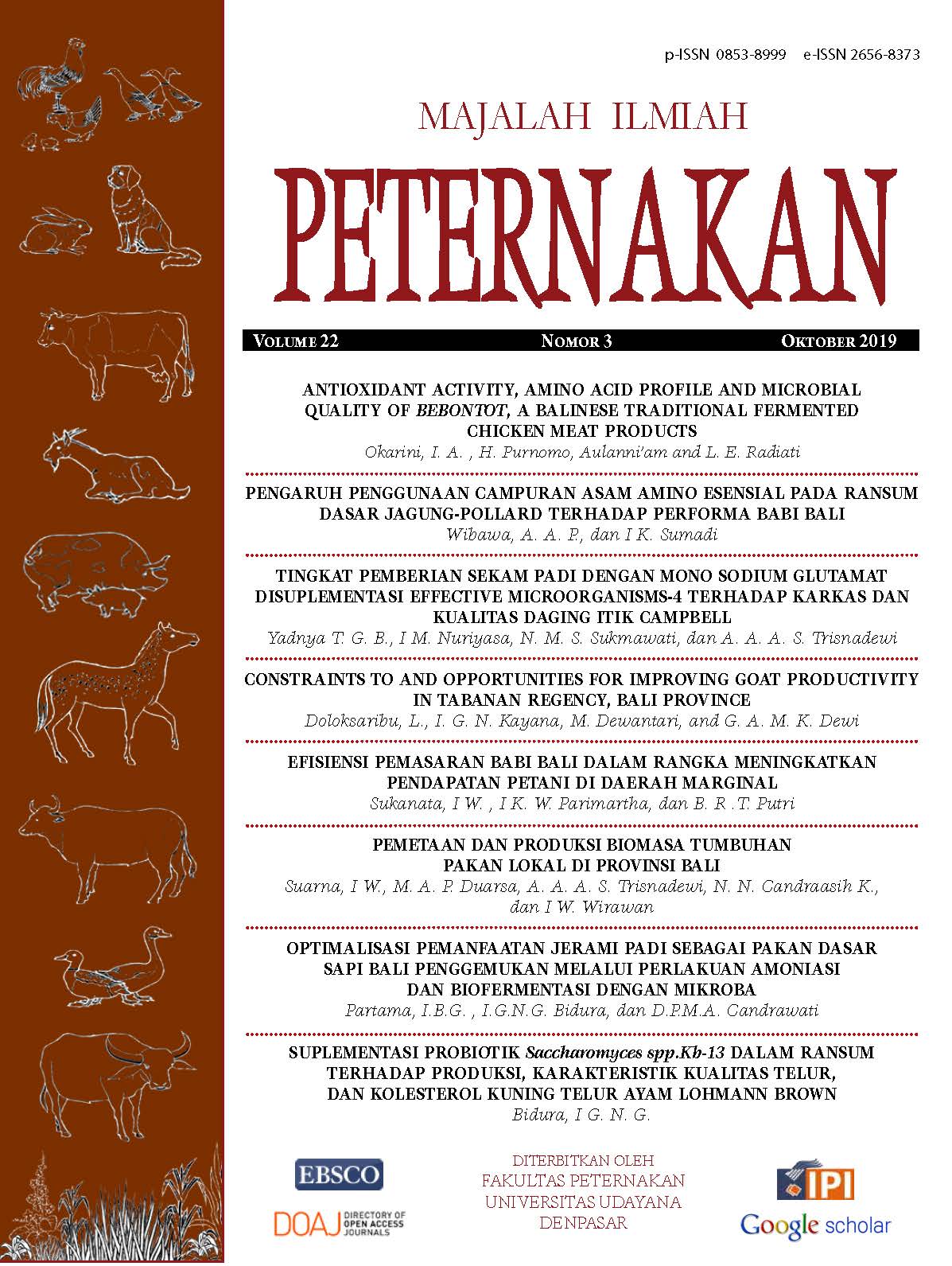MAPPING AND PRODUCTION OF LOCAL FORAGE BIOMASS PLANT IN BALI PROVINCE
Abstrak
Tropical forage has very strategic role due to the increasing need of forage to increase the productivity of
ruminants. Several types of local and introduced forage plants have excellent quality and potential to applied as
green concentrates. Based on those, a research is needed to map and calculate the production of local tropical
forages biomass in Bali Province. The study used survey methods in 190 land units. Land units are prepared using
overlapping method from soil type maps, land use maps, and climate maps. The results showed the differences
in the potential and characteristics of local forage plants in various climatic conditions, land use and soil types.
Areas with climate types D, E, and F are dominated by grass species such as Heteropogon contortus, Botriochloa,
Themeda, Polytrias, and Hyparhenia rupa. The average forage production of plants classified as natural pastures
was 214.11 kg DM ha-1 with the main contribution being Paspalum conyugatum and Cynodon dactilon each at
20.99% and 8.60%. The average production in forage, bush, tree, and intercropping were respectively: 871.11 kg
DM ha-1, 0.88 kg DM tree-1, 2.10 kg DM tree-1 151.2 kg DM ha-1. The tree species with the largest yield for forage
and had the best adaptability is Gliricidia sepium. The production of forage biomass in Bali reached 476,057.27
tons and its carbon storage reached 223,746.92 tons. It can be concluded that the diversity of tropical forages has
their own adaptability and perform a particular distribution among various regions in Bali. The diversity of local
forage species also produced high biomass which plays an important role in climate change mitigation.






